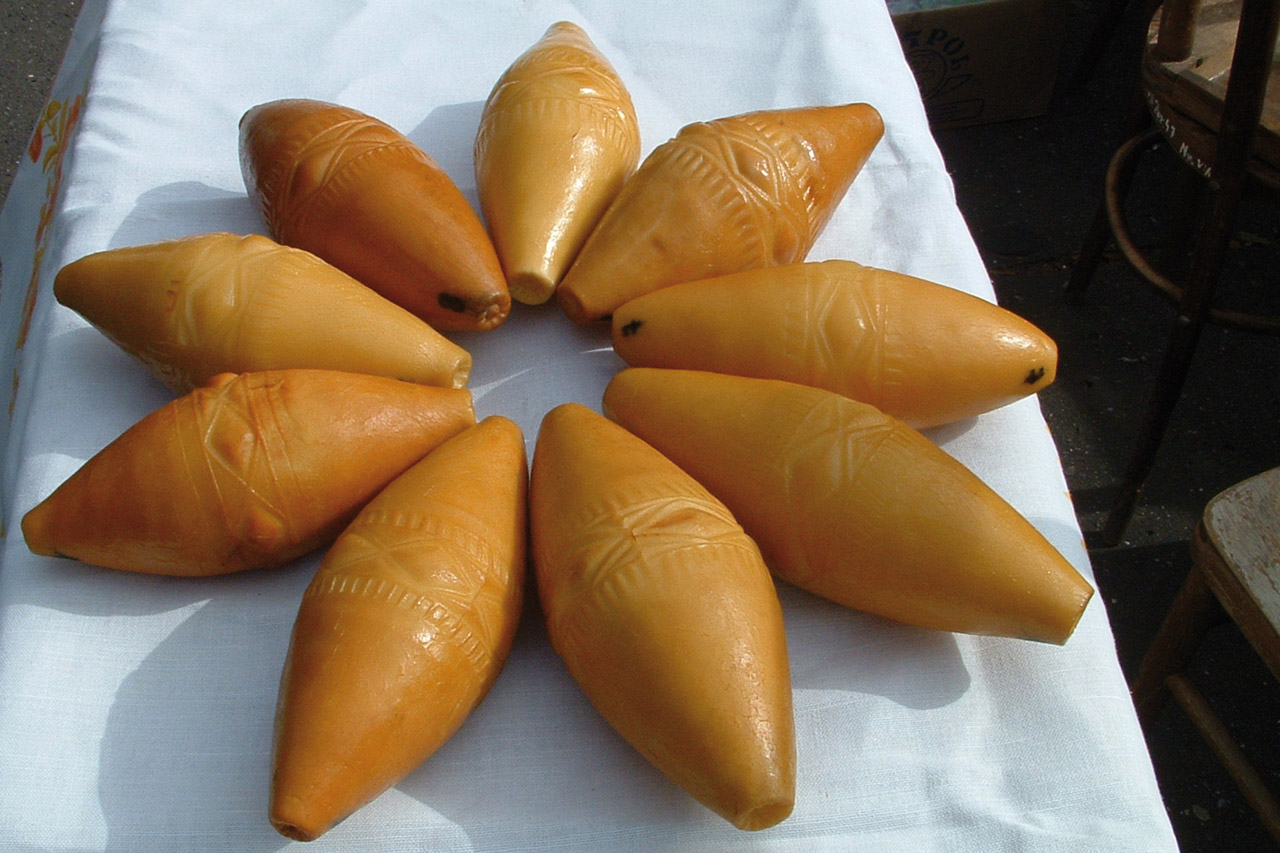Description
The Oscypek PDO is a cheese obtained from sheep's milk, of animals belonging to the race Polska Owca Górska (Polish mountain sheep); at times, cows' milk is used, belonging to the race Polska Krowa Czerwona (Polish red cow). The percentage of sheep's milk used cannot be lower than 60%.
Production Area
The production area of the Oscypek PDO includes the Istebna municipal area in the Cieszyn district, and the municipal areas Milówka, Wegierska Górka, Rajcze, Ujsoly, Jelesnia and Koszarawa in the Zywiec district, in the territory of Silesian Voivodeship. It also includes the entire Nowy Targ and Tatra districts, the Zawoja and Bystra Sidzina municipal areas in the Sucha district, several municipal areas in the Limanowa and Nowy Sacz districts, in the territory of Lesser Poland Voivodeship.
Production Method
The Oscypek PDO is produced only in the period between May and September. The milk is kept at room temperature in order to increase its acidity. Subsequently, it is mixed with fresh milk and rennet is added for the curdling process. The curd is then broken into bits using traditional instruments, and the cheese lumps sediment on the bottom of the container; the whey is removed and the lumps are pressed. The mixture obtained is mashed by hand until a ball is obtained, which is placed in a container with whey; then it is pressed and moulded until it takes on the shape of a double cone. To maintain the shape obtained, it is dipped in cold water and, once cooled, it is immersed in pickle for up to 24 hours. The next step is the drying process, which lasts for 12-24 hours, followed by the final smoking and maturation process, for a period of three to seven days.
Appearance and Flavour
The Oscypek PDO is shaped as a double cone or fusiform, its weight varies between 0.6 kg to 0.8 kg, its length between 17-23 cm, and its diameter in the wider part is between 6-10 cm. After the cut, the cheese presents a slightly creamy colour that gets darker close to the rind, featuring few, small holes. The rind is shiny, smooth, flexible, at times a bit rough, in a slightly glittering light brown colour. With an elastic consistency, it has a smoky, spicy, slightly salty taste.
History
The Oscypek PDO is an old, typical product of the Vlach shepherds that pastured their sheep on mountain clearings. The first description of how the cheese was manufactured in the lodges was retrieved in the State of Slemien instructions, which date back to 1748. In 1830 Ambrozy Grabowski relates how, throughout the summer period, the mountain inhabitants built lodges: «in which they gather the sheep of the surroundings and make cheeses called Oszczypki». In 1858, Maria Steczkowska supplied a detailed description of the pastures, the lodge equipment and the cheese manufacturing, as well as the containers used by the shepherds for their manufacturing on the Tatra Mountains.
Gastronomy
The Oscypek PDO should be kept in a cool place and, if cut, in the refrigerator, adequately protected with food wrapping paper or aluminium. Traditionally, it is served in thin slices, au naturel, along with bread, or it can be grilled. It is perfect with wine or with beer, but, often also with vodka.
Marketing
The product is commercialised as Oscypek PDO. It is only sold whole.
Distinctive Features
The manufacturing of the Oscypek PDO is linked to the experience, the tradition, the knowhow passed on from generation to generation, and to the specific and exceptional skills of the baca (head shepherds). In addition, the specific vegetation in the manufacturing area of the Oscypek cheese significantly influences the final taste of the sheep's milk used for its production. These are endemic species that only grow in the Podhale region and which constitute the flora of the meadows, the pasturelands and the mountain pastures.





